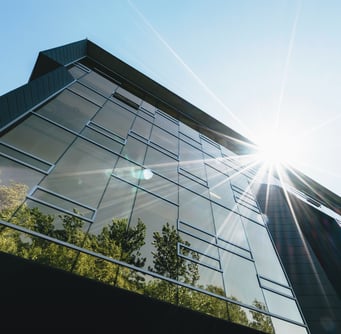When you're looking to deploy your network at the edge, there are so many considerations to keep in mind. One of the most critical is the environment. The elements can have significant effects on the success of your network - think about how snow, rain, rust, extreme heat or extreme cold could impact your technology. These factors can create some logistical challenges, but don't worry - we have the solutions.
 A standard IT enclosure simply won’t be able to provide the appropriate levels of equipment protection you’ll need in more harsh indoor and/or outdoor environments. Conversely, an industrial enclosure specifically designed to withstand the elements can and will provide the primary protection of sensitive equipment in these nontraditional spaces.
A standard IT enclosure simply won’t be able to provide the appropriate levels of equipment protection you’ll need in more harsh indoor and/or outdoor environments. Conversely, an industrial enclosure specifically designed to withstand the elements can and will provide the primary protection of sensitive equipment in these nontraditional spaces.
But, what’s the real difference between industrial enclosures and standard IT enclosures anyway? The main difference between the two enclosure types is that industrial enclosures are completely sealed to prevent ingress of dust and/or liquid.
Pro Tip: When it comes seals that offer the highest levels of equipment protection, look for a seal that is created using formed-in-place foam gasket technology. A robotic process applies this type of seal, and it is much more durable and reliable than adhesive-backed foam tape.
When you understand your environment(s), and are ready to select an enclosure, it will be important, prior to selection, to also understand NEMA and UL ratings, additional types and ratings meant to detail important differences in material build, type, location and more that all further help ensure you’ll select the appropriate enclosure for any nontraditional environment.
NEMA vs. UL
In the United States, the National Electrical Manufacturers Association (NEMA) identifies 16 types of enclosures for nonhazardous locations, each providing a different level of protection against dust and liquid penetration, in its “NEMA Standard 250 Enclosures for Electrical Equipment (1,000 V Maximum).”
Likewise, Underwriters Laboratories (UL®) has a similar system in “UL 50 Enclosures for Electrical Equipment, Non-Environmental Considerations; UL 50 Enclosures for Electrical Equipment, Environmental Considerations; and UL508A Standard for Industrial Control Panels.”
So, really, what’s the difference?
The difference between NEMA Type and UL Type is that manufacturers can self-certify NEMA Type enclosures, but UL Type enclosure performance is verified by UL through a series of design reviews and performance testing.
Explore the below for guidance on NEMA Type ratings for enclosures used in indoor and outdoor nonhazardous applications.
What to look for when evaluating industrial enclosures
When you’re ready to specify an enclosure, you’ll want to key in on vendors who can provide the following capabilities:
• Third-party certification: This helps verify a manufacturer's claims are valid and keeps them honest
• Robust construction: Look for fully-welded, steel construction
• Precision: Robotically-applied, continuous foam gaskets
• Configurability: Multiple styles and sizes, covering a wide range of applications
• Customization: On-demand modifications (size, openings, color, accessories and more)
• Personalization: Modified to blend or match surroundings
Planning for the environment is a critical consideration as your work to deploy a successful edge network. If you’d like to learn more, you’ll also want to check out a CPI White Paper titled, “Extending the Network Into Nontraditional Spaces: An Enclosure Selection Guide for IT Systems Administrators That Support IoT.” Download the White Paper today.
To learn more, contact your local Accu-Tech representative.



.png?width=58&height=58&name=X_logo_2023_(white).png)
